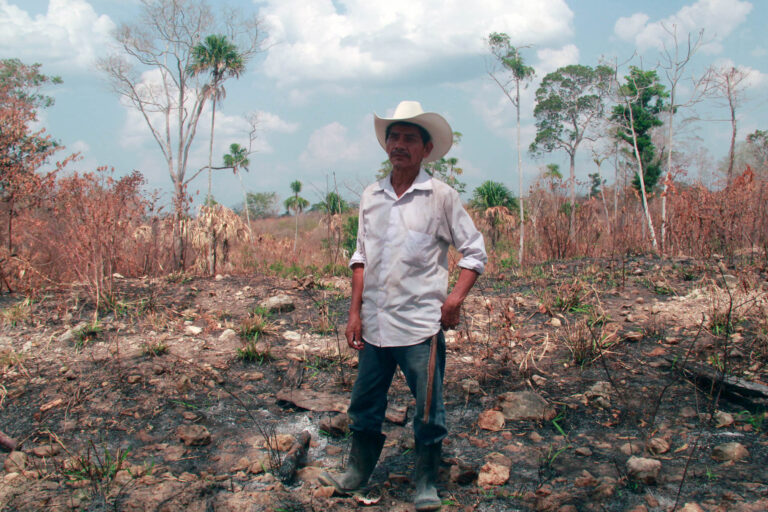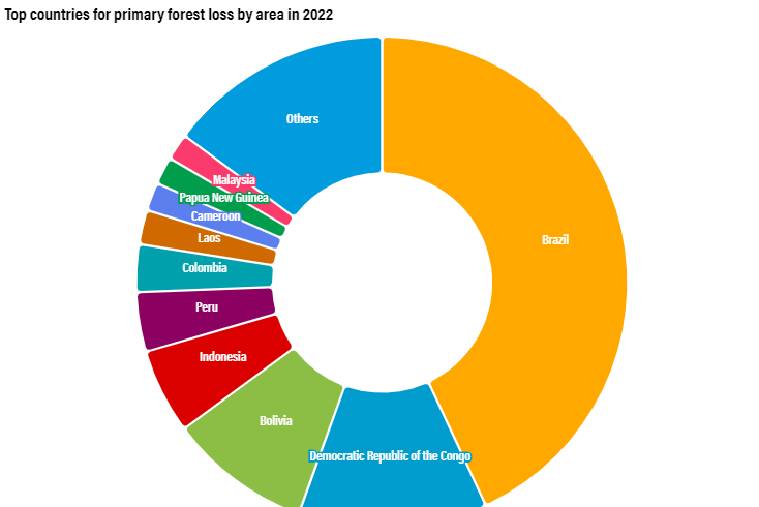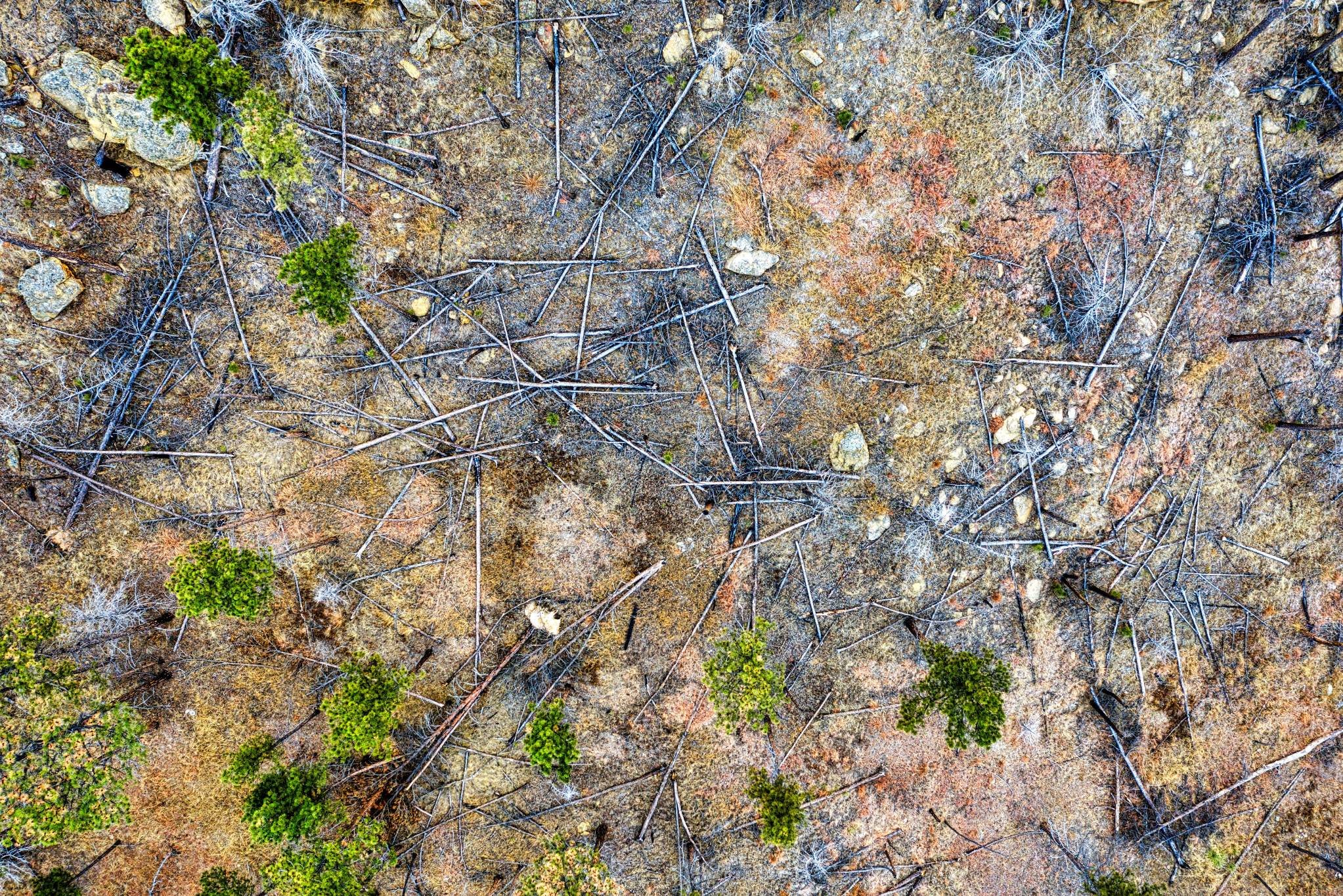Tropical Primary Forest Loss Worsened in 2022
The world’s tropical rainforests suffered a devastating blow in 2022, with a 10% increase in primary forest loss compared to the previous year, according to newly released data from the University of Maryland, accessible on the World Resources Institute’s (WRI) Global Forest Watch platform. The loss amounted to a staggering 4.1 million hectares, equivalent to losing 11 football fields of forest every minute. This rampant deforestation generated a massive 2.7 gigatonnes (Gt) of carbon dioxide emissions, equivalent to India’s annual fossil fuel emissions.
This disheartening rise in forest loss comes just after leaders from 145 nations solemnly committed in the Glasgow Leaders’ Declaration on Forests and Land Use to halt and reverse deforestation by the decade’s end. The recognition of forests’ crucial role in combating climate change and biodiversity loss has now been undermined by this alarming trend moving in the wrong direction.
The significance of forests cannot be overstated. They are critical ecosystems that combat climate change, support livelihoods, and protect biodiversity. Reducing deforestation is one of the most cost-effective land-based solutions as the world grapples with the imminent climate crisis. Forests act as carbon sources and sinks, absorbing carbon dioxide when they stand or regrow and releasing it when cleared or degraded.
Moreover, forests sustain the well-being of approximately 1.6 billion people, including nearly 70 million Indigenous Peoples, who rely on forest resources for their livelihoods. Deforestation, especially in tropical regions, exacerbates local temperature changes and alters rainfall patterns, compounding the impacts of global climate change. This has far-reaching consequences for human health and agricultural productivity.
Biodiversity also finds its sanctuary in forests, which harbor the most incredible variety of species of any ecosystem on Earth. The Global Biodiversity Framework, adopted in 2022, emphasized the urgent need to halt and reverse the loss of natural ecosystems, including forests, to preserve the intricate web of life that relies on them.
At the national level, the data reveals mixed results. While primary forest loss has risen in Brazil and the Democratic Republic of the Congo, it has also rapidly increased in Ghana and Bolivia. In contrast, Indonesia and Malaysia have managed to maintain primary forest loss rates near record lows.

A community brigade member rests after a day fighting fires in the forests of the Selva Maya. Photo: Jorge Rodriguez/Viatori
Brazilian Amazon sees the highest rate of non-fire-related loss since 2005
Brazil, home to the Amazon rainforest, witnessed the highest rate of non-fire-related primary forest loss since 2005, with a 15% increase from 2021 to 2022. Most of this loss occurred in the Amazon, primarily due to clear-cut deforestation. Brazil’s forest loss had significantly declined in the early 2000s under President Luiz Inácio Lula da Silva (Lula). However, the recent surge aligns with the erosion of environmental protections, weakening enforcement agencies, and attempts to grant amnesty for illegal deforestation during Jair Bolsonaro’s administration.
There is a glimmer of hope with the re-election of President Lula, who took office on January 1, 2023. President Lula and his administration have pledged to end deforestation in Brazil’s Amazon and other biomes by 2030, adopting a comprehensive approach combining command and control measures with long-term sustainable economic development. However, progress may take time to be visible as enforcement agencies are re-equipped and re-staffed, and investigations into illegal activities are underway.

Source: World Resource Institute (WRI)
Brazil has the highest tropical primary forest loss, accounting for 43% of the global total in 2022. The 1.8 million hectares lost in Brazil resulted in a staggering 1.2 Gt of carbon dioxide emissions, equivalent to 2.5 times Brazil’s annual fossil fuel emissions. The repercussions extend beyond carbon impacts, as forest loss in the Amazon disrupts regional rainfall patterns and threatens to push the ecosystem past a critical “tipping point” where it transitions into a savanna-like landscape.
The acceleration of primary forest loss in the Western Amazon, particularly in the states of Amazonas and Acre, is particularly concerning. These areas experienced record-high levels of forest loss in 2022. Large-scale clearings, likely for cattle pastures, were the primary cause. Urgent action is needed to curb deforestation in these critical regions before irreversible damage occurs.
As the world grapples with the worsening climate crisis and the urgent need to protect biodiversity, the escalating loss of tropical rainforests demands immediate attention and action. The Glasgow Leaders’ Declaration on Forests and Land Use must be translated into tangible policies and enforceable measures to reverse this troubling trend. We hope to mitigate climate change, support communities, and preserve Earth’s incredible biodiversity for future generations by safeguarding and restoring these vital ecosystems.
